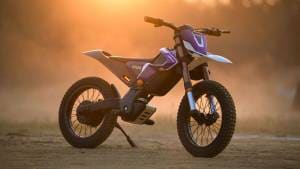Five things you should know about the Raid de Himalaya
The Raid de Himalaya is possibly one of the most gruelling rally-raids held in the world. Drivers and riders need to tackle tricky terrain, deal with mountain passes that go very, very high, and also manage to tackle fatigue and altitude sickness that comes as a part of the package. But there's something about the call of the mountains that keeps people going back to the treacherous event repeatedly.
Here then, are five facts that you didn't know about the Maruti Suzuki Raid de Himalaya:
Suresh Rana has won the Raid de Himalaya a record 10 times
The Raid de Himalaya is tough on both man and machine. So it takes a special sort of driver-navigator combination to win the event more than once. Meet Suresh Rana - who has won the event not just more than once, but a record 10 times. Rana went into the 2015 edition of the Raid hoping to clinch his tenth victory at the event.
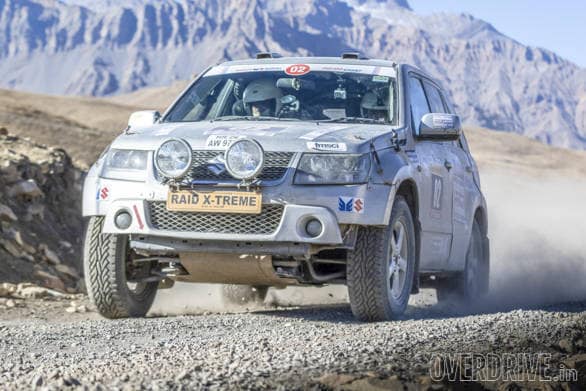 Suresh Rana in his Maruti in which he won the 2016 edition of the Raid - his 10th victory at the event.
Suresh Rana in his Maruti in which he won the 2016 edition of the Raid - his 10th victory at the event.
Unfortunately, that wasn't to be, after Lhakpa Tsering was awarded the overall victory once Raj Singh Rathod was disqualified. But he made his comeback in 2016, taking victory at the shortened version of the Raid, with co-driver Ashwin Naik. This year he's gunning to go one better, and take an eleventh victory.
The Raid has attracted diverse machinery over the years
Over the course of the years, the machinery used in the Raid has slowly evolved. From rally riders on Suzuki Supras and Shaolins to Sherco TVS Rally 450s and Yamaha WR 450s, to the Maruti Suzuki Gypsy that's seen at almost every single event, there have been many machines on the mountain stages.
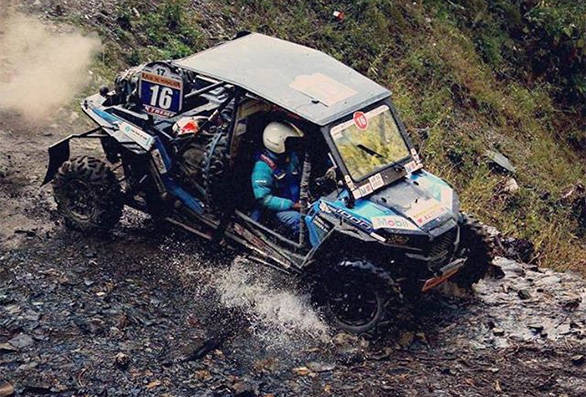 Here's an image of Lhakpa Tsering at the 2015 edition of the Raid, which he was declared the overall winner of.
Here's an image of Lhakpa Tsering at the 2015 edition of the Raid, which he was declared the overall winner of.
In fact, it's the Gypsy that is the winningest machine at the Raid, having led 13 teams to the overall win. But now things are changing. Rana has won the Raid in his Grand Vitara a total of three times. And, the overall winner in 2015 was a Polaris RZR 900 Turbo, piloted by Lhakpa Tsering.
The Raid is unpredictable!
When most people think of a rally in the mountains, they think of a road winding its way around hills and dales. And they have visions of snow-capped mountains in the distance, and picturesque valleys below. Yes, all of that is true. And the vistas that the Raid offers are some of the best in the world. But that doesn't change the fact that the Raid is terribly unpredictable.
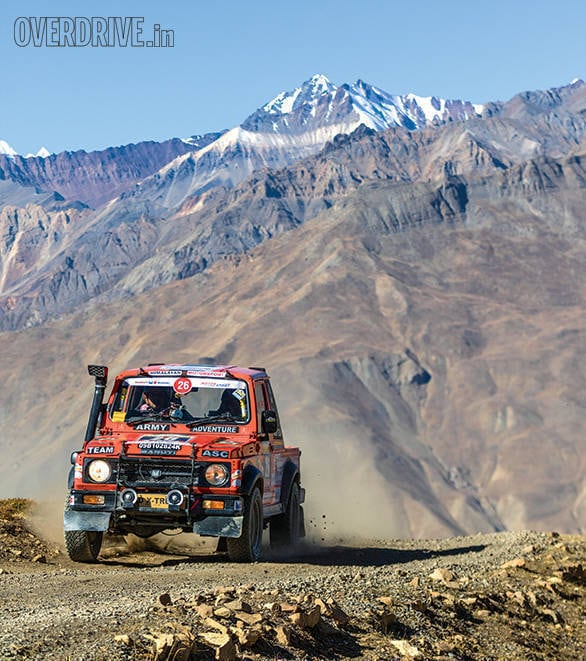 The snow-capped mountains in the background are picturesque, but the Raid often has harsher conditions. Blizzards and snow storms are par for the course.
The snow-capped mountains in the background are picturesque, but the Raid often has harsher conditions. Blizzards and snow storms are par for the course.
Remember, the temperatures drop to below zero degrees in some parts, there are icy cold river crossings to be tackled, and there are even more forces that Mother Nature throws the way of participants. Blizzards, earthquakes and snowstorms are all par for the course at the event!
The Raid is the world's highest rally raid
The Raid de Himalaya is often acknowledged to be the world's highest rally-raid. After all it is run in a region that is famous for having the world's highest motorable road - Khardung La. And the stages are approximately 6000m above sea level, quite consistently.
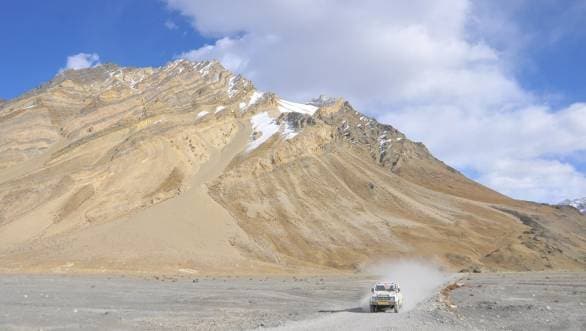 Rallying at a height of 6000m above sea level? Altitude sickness is also par for the course!
Rallying at a height of 6000m above sea level? Altitude sickness is also par for the course!
This year the Raid's route will involve participants traveling through the mountain pass of Tanglang La, which is at a height of 17,480ft. In addition, over the course of the 2,400km, the six-day event will traverse through Manali, Kaza, Pang, Leh, Kargil via Pansi la, Drass and Sankhoo before culminating at Leh.
Fighting for the environment
It is a fact that the Raid de Himalaya is a gas-guzzling event, where cars and motorcycles, and now even quads, make their way to the mountains in order to fight for the ultimate crown of victor at the event. But that doesn't mean that the organisers of the event aren't aware of the environmental factors that are at play here.
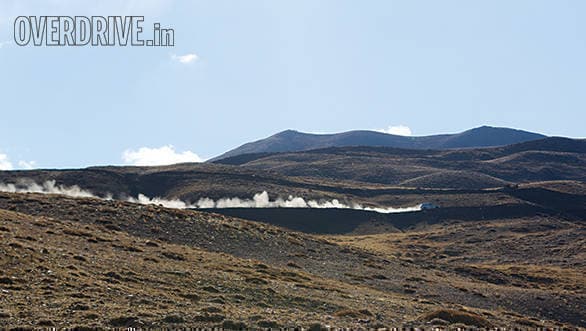
So in order to counter some of the negative effects of running a rally raid up in the mountains, the Raid and its organisers the Himalayan Motorsport Association, organise tree plantation drives, promote the use of solar energy in villages in Ladakh, providing villagers with solar lanterns, solar lighting and heating panels. There are other factors too - decibel checks as per international norms to keep noise levels in check, and spillage prevention policies to ensure that no fluids from the machines are left in the mountains as chemical pollutants.
Also read:
Maruti Suzuki Raid de Himalaya: A look back
2017 Maruti Suzuki Raid de Himalaya to be flagged off from Manali on October 7
2016 Maruti Suzuki Raid de Himalaya: The cold truth
2015 Maruti Suzuki Raid De Himalaya: Running on fumes
-NA-
-NA-
103.06
-NA-
-NA-
